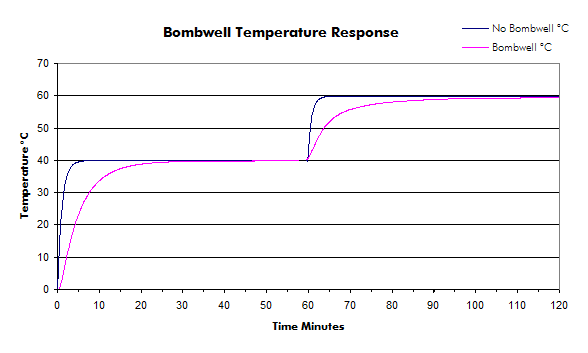Temperature Response of Downhole Recorders Run with Bombwells
Quick Summary: Bombwells are often used to protect downhole recorders from corrosive well fluids. Typically a bombwell is filled with some kind of inhibitor fluid. The well fluids have to dissipate through the fluid before it starts to corrode the gauge. Unfortunately there is one side effect; the temperature response of the gauge is greatly reduced.
In the graph below, data is collected from our ¾” Mole Downhole recorder. The gauge was first put in an ice bath so the temperature can stabilize at 0°C. Next, the recorder was plunged in a tank of hot oil at 40°C for an hour. Finally, it was immersed in a tank at 60°C. The entire procedure was then repeated using a bombwell filled with thermal transfer oil.

From the graph it can be seen the temperature of a gauge without a bombwell settles out in 5-10 minutes. Comparatively, from the graph, the temperature of a gauge with a bombwell settles out in roughly 30 minutes; an increase in the temperature settling time by a factor of almost 4. Therefore, in tests where the setting time is important, such as taking a gradient, it is highly recommended that no bombwell be used, or longer stops be done to allow the temperature of the gauge to settle. Note that the exact settling time depends on the inhibitor fluid and bombwells thermal characteristics, and should not be inferred from the above graph.
A bombwell is not usually necessary with modern recorders, such as CalScan's Badger, Mole, and Wolverine tools, since most of our gauges are made of Inconel® 718. This material is extremely resistant to chemicals, making it almost impossible for downhole fluid to damage the housing itself. Care must still be taken to protect the pressure sensor with inhibitor grease or a pigtail when a gauge is run in highly corrosive well fluids. Also note that the proper o-rings must be used to ensure a successful test.
